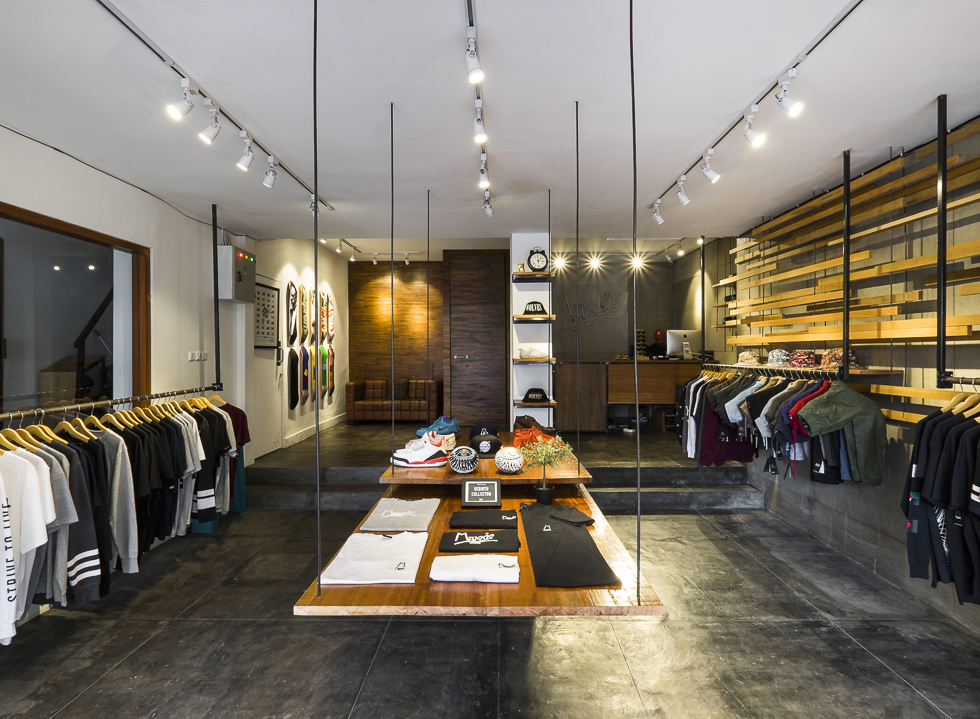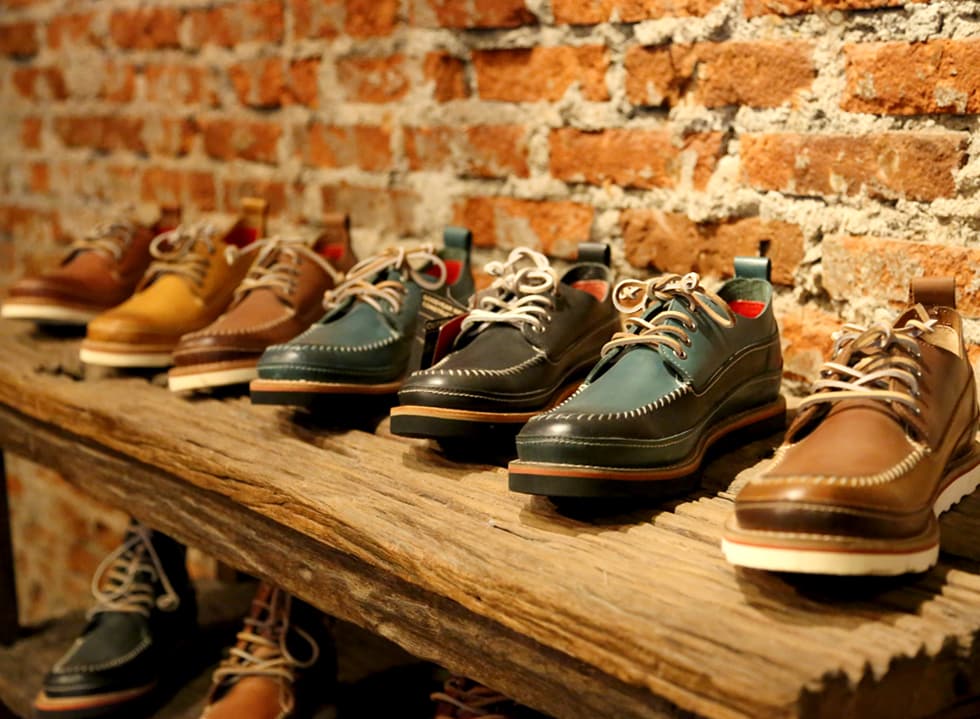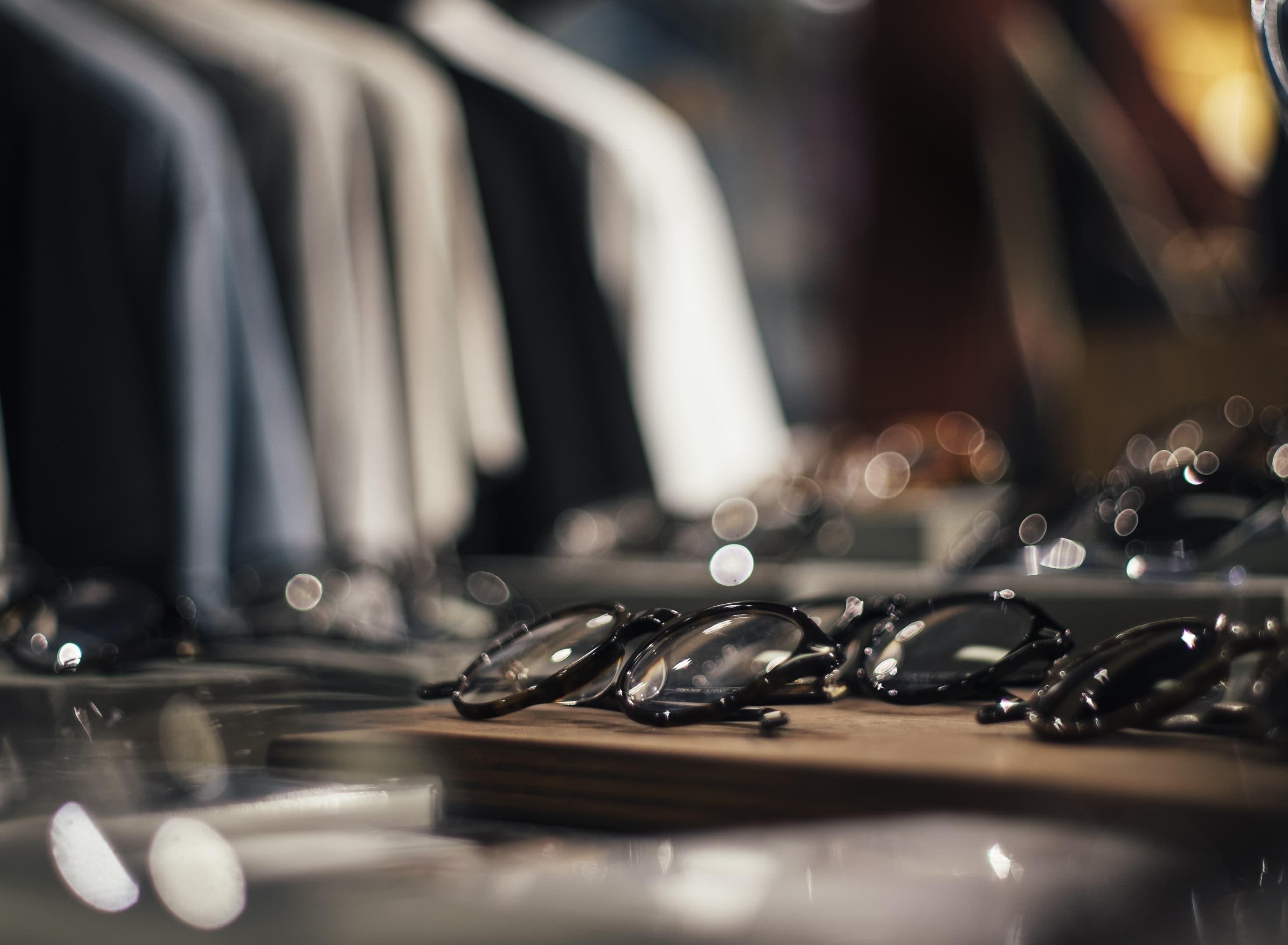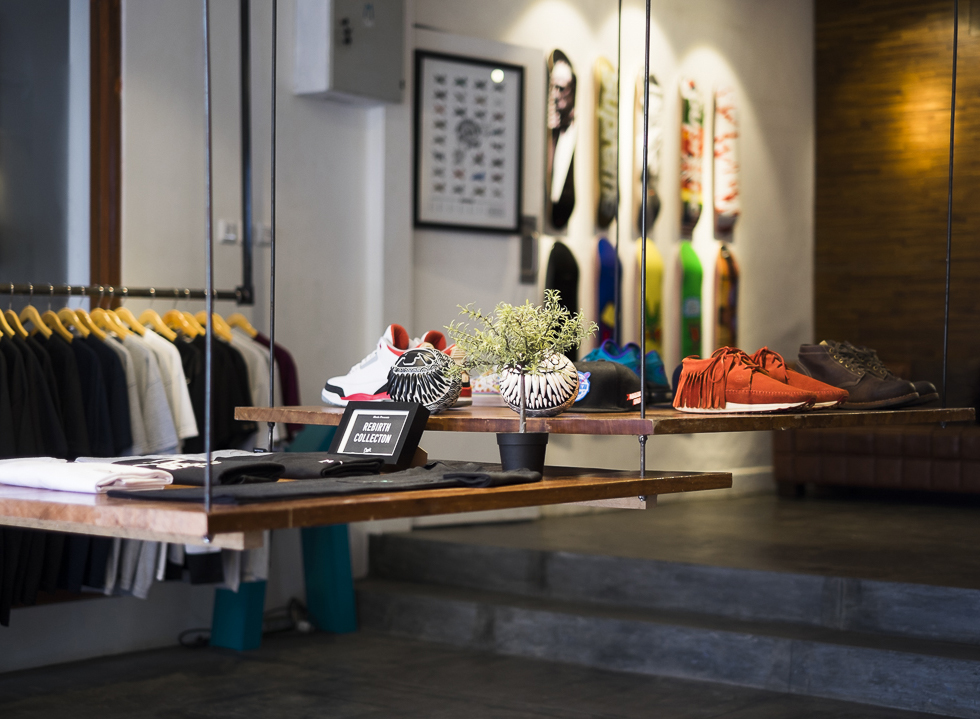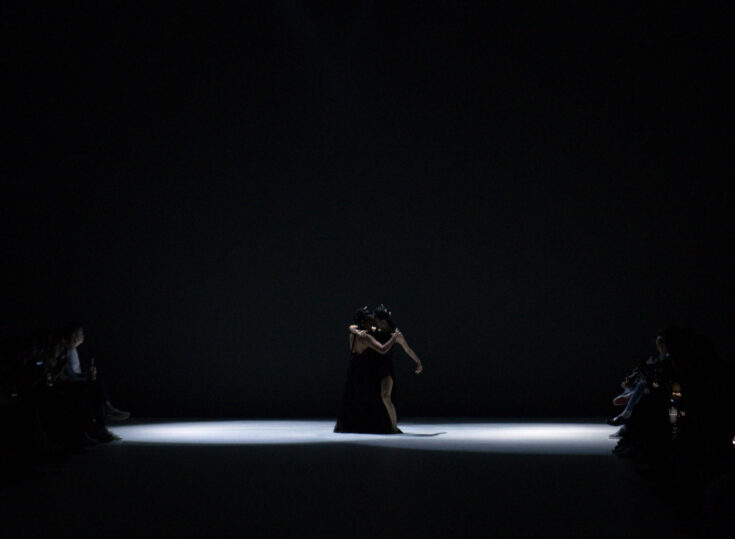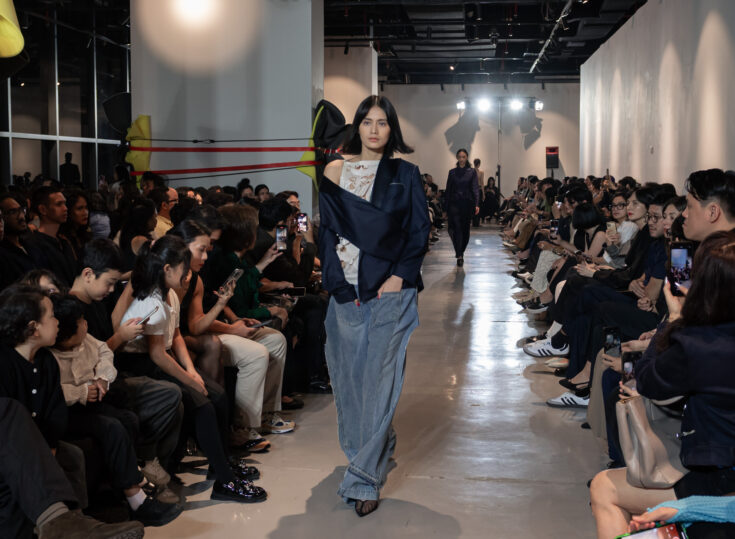Somewhere between the ranks of high fashion and the average white t-shirt is a branch of fashion most easily labelled as streetwear. And for the past several years, streetwear has become an increasingly large facet of Jakarta’s fashion. So much so that it probably isn’t even appropriate to label streetwear as something stemming off of fashion, as opposed to viewing it as a subculture in itself. Following the rapid growth of popularity that it has seen in Jakarta, here, we shine a light on the prevailing streetwear scene in the city.
The Rise of the Trend
Streetwear as a subculture has already rooted itself deeply within Jakarta back when it began to gain traction in the late nineties, largely amongst skaters around the Senayan area who were influenced heavily by the American Skate, Punk-Rock and Hip-Hop scenes.
Founder of CAPITAL, a Jakarta-based streetwear label, Angga Adiyatama, reminisces about the time when the term “streetwear” hadn’t entered the youth’s lexicon back then. “[We] didn’t consider what we were wearing to be streetwear back then. It just so happened that we were so immersed into a culture, and this was what everybody else was wearing. Jeans to skate in, wallet chains and a graphic tee; that was the way to go,” says Angga, who established the label in 2008.
As time goes by, though progressing rather unhurriedly, more Jakartans are attuned to the culture of streetwear. Within the past several years especially, the subculture’s popularity has seen an exponential rise in the city – whereas in fact, not more than five years ago, the trend was still considered to be relatively niche, as Dimas Indro, founder of the highly popular streetwear boutique Maris testifies, “Not too long ago, you wouldn’t even dream of seeing this many people wearing streetwear labels. But here we are now, with more and more people getting into it every day.”
One factor that could be accredited towards the rise is, rather surprisingly, the Indonesian economy. “As a country, we’ve been doing pretty good in terms of our economy,” says Claude Hutasoit, who owns streetwear label Tuff-Stuff that stemmed from his passion for skateboard and its culture. “Big sportswear companies are starting to see a potential in our markets, which kind of explains why so many streetwear items are becoming more readily available.”
And indeed, this is evident from the number of stores that feature streetwear garb, which have shown up in the city within the past few years; though, granted, most are mainly centralised in the South. For instance, seasoned players such as Footurama, 707 Store and Maris are located in South Jakarta, but lately, some has popped up in other regions as well, such as Art & Science in Central Jakarta and The Goods Dept, which has spawned retail shops in a number of mega malls around the city. It is as if Jakarta is going through an era where not only has the demand for streetwear risen, but also the number of its suppliers.
But of course, much of streetwear’s increasing popularity here could also be related towards the rise in streetwear culture overseas. Tamish Aswani, co-founder and creative director of Jakarta-based label Ageless Galaxy points out, “With big-name rappers like Drake, Kanye and A$AP Rocky pushing the look so much, it isn’t hard to see why streetwear is becoming more popular these days.” And in an increasingly connected world, it’s understandable that even all the way in Jakarta, many are beginning to adopt the look of these cultural influencers.
The Scene in Jakarta Today
Today, the streetwear scene in Jakarta has evolved into something that is quite in and of itself. And yet, although one may hope to see a defining characteristic of streetwear in Jakarta, there simply isn’t one yet. As Claude puts it, the general consensus on Jakarta’s aesthetic is “whatever’s popular in the West, is popular here.”
However, this statement is not as pessimistic as it sounds. It could just be that the streetwear scene in Jakarta represents what streetwear would look like in a metropolis.
“Take Berlin, New York or Tokyo for instance. The reason we see the same things over these vastly different environments is because, in each city, we’re seeing a version of streetwear that is relevant in the big cities of today,” says Max Suriaganda, founder of the highly popular streetwear-focused consignment store Footurama and creative director of its in-house clothing line Freeform Fabrication (FFF).
Of course, amidst all this, there is an irony that is not to be missed in Jakarta’s streetwear scene. Simply put, the actual streets in Jakarta do not necessarily accommodative towards the subculture. Giorgi Krisno, the other half of Ageless Galaxy, argues, “It’s funny to think how streetwear has been adapted in Jakarta, because it’s probably more appropriate to call it mall-wear here.”
With that, it could be argued that streetwear in Jakarta is thus contained as Jakartans usually wear them to malls and, in many cases, being unexposed to the critical process that goes behind the formation of streetwear: the interweaving of culture and demographics that most commonly happens on the streets of a big city.
“Out in the streets of other cities, you could be inspired by how a construction worker wears his shirt or how someone else wears their trousers,” says Max about the creative process that forms a streetwear brand. Alas, that is something that is absent in Jakarta. “In here, that just doesn’t happen as much,” Max adds.
A Perceived Exclusivity
A pitfall commonly associated with streetwear, including in Jakarta, is the belief that there is an unwritten hierarchy. At the top, sits people who have been long into the scene, buying pieces from labels only because they relate to it and are highly knowledgeable of the product; or in streetwear lingo, the OGs, a shorthand term often used to denote the word “Original.”
On the other end, there are those, usually newcomers, who buy into a brand simply because of its popularity, or perceived “hype.” The stereotype often goes that these newcomers purchasing a certain brand only to be seen, without a full understanding of the context or stories behind each of the piece.
“In everything we make, we try and see what stories we can convey through the pieces,” says Tamish, emphasising that streetwear clothing is largely created based on the stories behind them. “We don’t care if you’re 15 or 50 [years old], but if you believe in our stuff, then you can wear it as much as you want.”
It comes as no surprise then, that streetwear as a subculture, is one that highly regards the stories and experiences of the collective people who wear it.
However, thinking that OGs are constantly there to scrutinise newcomers to the trend is actually quite misleading. “Personally, I don’t mind when someone new decides to take up streetwear. I love it when they do,” says Claude. “Saying someone isn’t genuine because they’re new shouldn’t be part of streetwear. Maybe they’ve found it as a good way to express themselves. Besides, everybody has to start somewhere, right?”
At the end of the day, the subculture is bound to only stay relevant to those who truly love it. Being a subculture, streetwear extends far beyond, and should not be seen merely as a product. Every piece that is produced is unique in that, as Angga puts it, “There is a culture and story, even if just a bit, behind everything a streetwear label makes.” It is safe to say then, that if newcomers couldn’t relate to the stories conveyed by the streetwear they are buying, then they probably wouldn’t be in the hobby for too long.
Fashion Fad or Here to Stay?
With all that being said, it’s easy to say that streetwear is Jakarta’s current muse. What with its evident rise in popularity over the past few years, this particular branch of fashion has no doubt entered into the consciousness of Jakarta’s inhabitants. But whether or not the enthusiasm for streetwear in the city will continue to increase, the scene will keep on evolving regardless of mainstream opinion.
“From when I first began [CAPITAL], I’ve stuck with it through times where streetwear was popular, and through the tougher times when it wasn’t so popular,” says Angga. “But it’s always been an enjoyable ride, to see how the scene changes, especially when you’re so passionate about it.”
One thing to look forward to is that a more distinct style can be expected out of Jakarta, and each region of the city can even begin to develop aesthetics of its own. “When we peer into a big metropolitan area, we can start to see the little details of its inhabitants once we take a closer look at the individual regions,” says Max.
As the city becomes more familiar with the subculture, it wouldn’t be a surprise to witness that specific regions in Jakarta will become even more distinct in the ways which they would wear streetwear. For instance, those in North Jakarta would probably wear a certain brand differently than those who wear it in the South.
At the end of the day, the unlikeliest comparison can be brought up: Jakarta’s streetwear scene is like a teenager on the cusp of adulthood. Though some brands have started early than most others, its scene in Jakarta is very much young in nature and still has much to learn. Whether or not it will prevail in the future within the mainstream culture, nobody can foresee it for sure. But, interestingly, founders of streetwear brands that have long existed in Jakarta are rather optimistic.
“Of course, streetwear has always been, and will always be existent, whether or not it is popular to mainstream culture,” Max argues. “Eventually, only those who can identify a relevance with the culture will stick around to it.” Or, in the words of our allegory, remain with Jakarta’s scene long enough in time to see it mature into a brand of its own.




